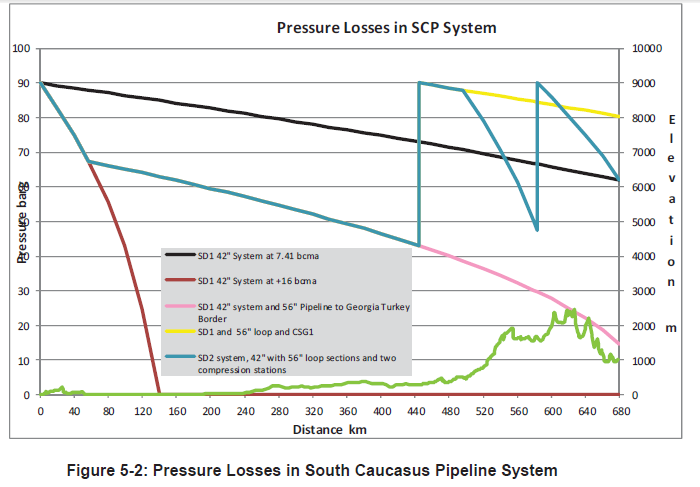Hi there,
I'm evaluating a gas transmission line where a specific capacity has been requested but the differential between the lines don't seem to be enough to achieve said capacity.
All in all, I was wondering if I could get a second pair of eyes to verify my approach. What I'm doing is using the General Flow Equation and colebrook-white friction factor (similar to using panhandle A/B or Weymouth) and solving for a delta-P as a function of Q capacity and a Inlet pressure P1. As a simple example, if I were to put a 20" lateral line in between two existing pipelines, lines 1 and 2:
Lateral Line Size: 20in
Line 1 operating pressures: (800-900 psig)
Line 2 operating pressures: (1100-1300 psig)
The worst case scenario for capacity would be when the lines are operating at pressures which give the lowest differential (line 1 @ 900 psig and line 2 @ 1100 psig).
Solving for a differential of 200 psig, I get a maximum capacity of around 230 MMscfd.
The best case scenario for capacity would be when the lines are operating at pressures which give the highest differential (line 1 @ 800 psig and line 2 @ 1300 psig).
Solving for a differential of 500 psig, I get a maximum capacity of around 380 MMscfd.
So, if it was said that 500 MMscfd is the desired capacity for this scenario I could easily say that it isn't possible. Correct? Is my approach valid?
I'm evaluating a gas transmission line where a specific capacity has been requested but the differential between the lines don't seem to be enough to achieve said capacity.
All in all, I was wondering if I could get a second pair of eyes to verify my approach. What I'm doing is using the General Flow Equation and colebrook-white friction factor (similar to using panhandle A/B or Weymouth) and solving for a delta-P as a function of Q capacity and a Inlet pressure P1. As a simple example, if I were to put a 20" lateral line in between two existing pipelines, lines 1 and 2:
Lateral Line Size: 20in
Line 1 operating pressures: (800-900 psig)
Line 2 operating pressures: (1100-1300 psig)
The worst case scenario for capacity would be when the lines are operating at pressures which give the lowest differential (line 1 @ 900 psig and line 2 @ 1100 psig).
Solving for a differential of 200 psig, I get a maximum capacity of around 230 MMscfd.
The best case scenario for capacity would be when the lines are operating at pressures which give the highest differential (line 1 @ 800 psig and line 2 @ 1300 psig).
Solving for a differential of 500 psig, I get a maximum capacity of around 380 MMscfd.
So, if it was said that 500 MMscfd is the desired capacity for this scenario I could easily say that it isn't possible. Correct? Is my approach valid?

